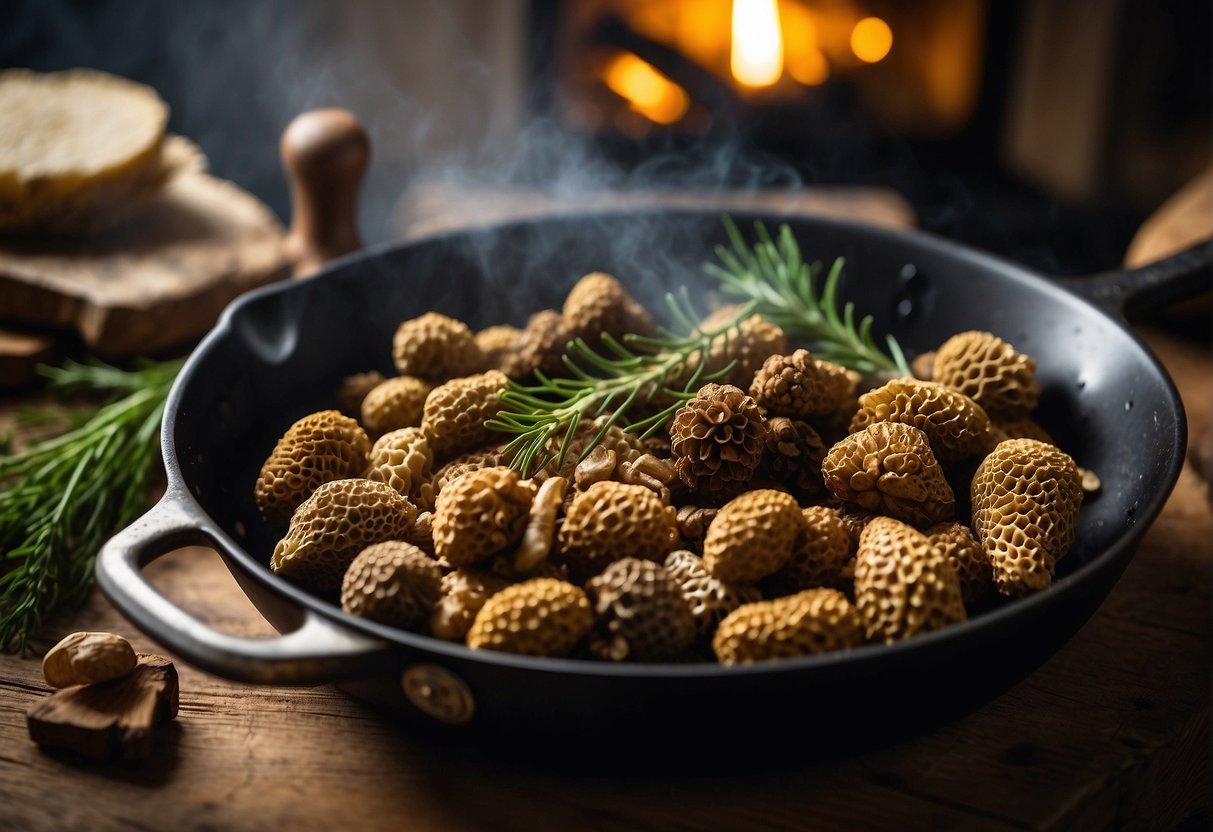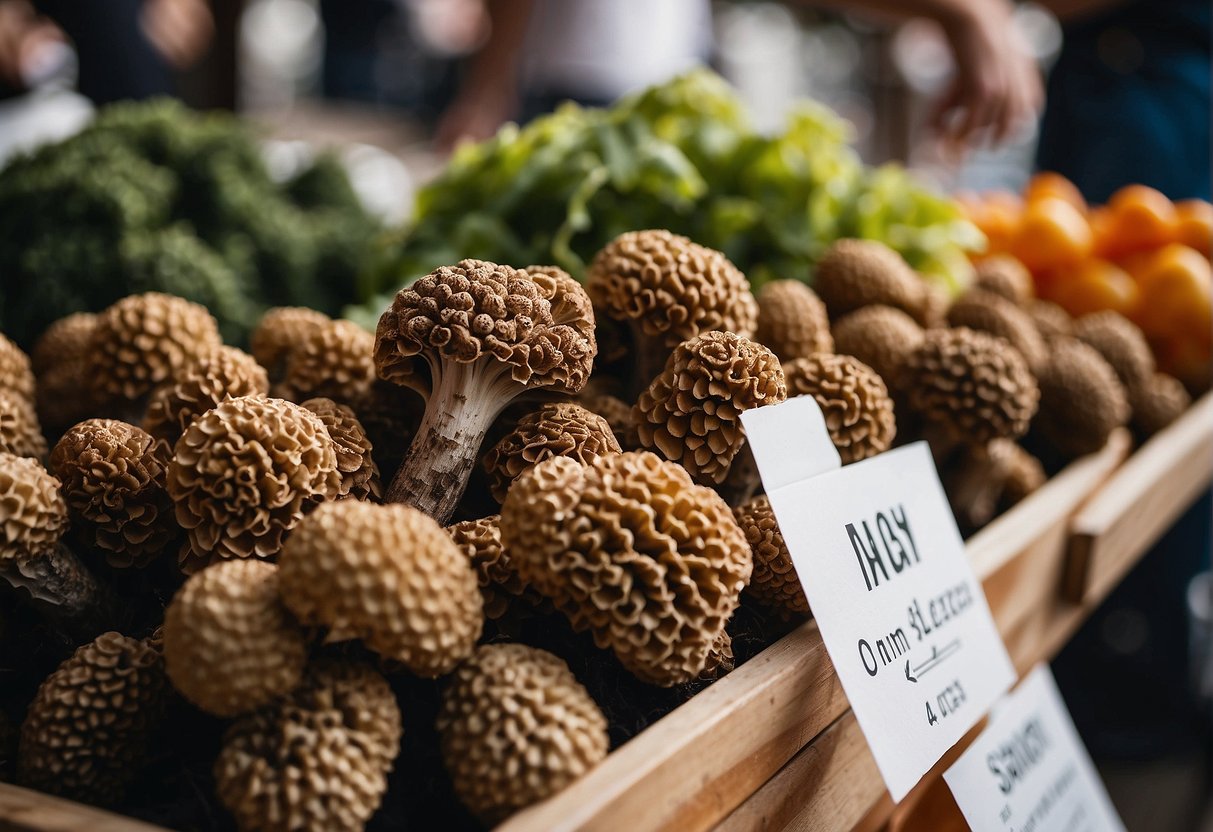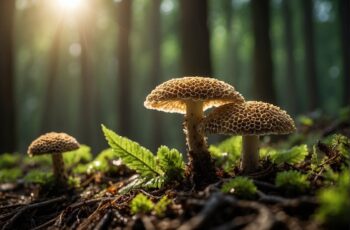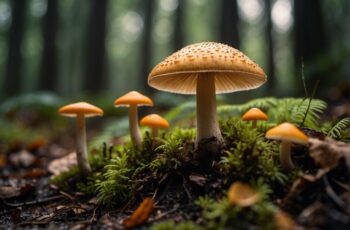Embarking on the hunt for morel mushrooms is an exciting endeavor that blends the thrill of the hunt with the joy of being outdoors, offering both an exercise in nature’s subtlety and a culinary reward. As spring blankets the forests with warmth and moisture, it creates ideal conditions for these elusive fungi to thrive. Morels are prized by foragers and chefs alike for their unique honeycomb appearance and their rich, nutty flavor, which is a herald of the spring foraging season.
Understanding the ecology of morels is critical to successfully find them. These mushrooms enjoy the company of certain trees and often flourish in particular environments such as woodland edges or areas where wildfires have recently occurred. Effective foraging for morels also involves distinguishing true morels from their toxic look-alikes, known as false morels, which can be harmful if consumed.
Key Takeaways
- Morel mushrooms are a springtime delicacy found in the wild, favored for their distinctive flavor and texture.
- Knowledge of morel habitats and the trees they associate with can greatly increase foraging success.
- Proper identification and preparation are essential to safely enjoy the culinary benefits of morels.
The Ecology of Morels
Understanding how morels thrive will significantly enhance your ability to locate them. Recognize the unique symbiotic relationships they forge and how they cycle through their ecosystem within specific habitats.
Understanding Morel Habitats
Morels have a penchant for growing in varied and specific environments. You’ll often find them in deciduous forests, especially around elm trees, which are known to be conducive to morel growth. The right conditions include moist soil, adequate sunlight, and a certain composition of the forest floor. After the winter thaw, south-facing slopes become prime locations due to their earlier exposure to the sun and hence, warmer soils.
The Symbiotic Relationship with Trees
Morels form a symbiotic association with trees. This means they engage in a mutually beneficial exchange of nutrients with living trees, or they capitalize on the organic matter provided by deceased ones. Particularly, elms that are dying or dead stumps are often a hotspot for morel enthusiasts. Their intricate web of underground mycelium interacts closely with the root systems of oak, elm, ash, and aspen trees, sharing resources in a delicate balance pivotal to the local ecosystem.
Morel Lifecycle and Ecosystem
The lifecycle of morels within their ecosystem is fascinating yet complex. Post-winter, as temperatures rise and the soil moistens, morels send up their fruit bodies to release spores. Those spores germinate under favorable conditions, eventually propagating the species. Fire-affected areas are some of the best places to look for wildfire morel growths. The nutrients released from the burned materials invigorate the growth of morels, turning these locations into bountiful havens.
Identifying True Morels
In the pursuit of foraging, correctly identifying true morels is paramount for both the safety and enjoyment of your woodland excursions. Here are some specifics on morel varieties and safety protocols to ensure a successful hunt.
Distinguishing Morel Varieties
True morels can be identified by their unmistakable caps, which look ridged and pitted akin to a honeycomb. The spectrum of morels runs from black morels early in the season, sporting darker, thicker skins, to yellow morels that appear as the weather warms, with lighter colors and a more delicate structure. Both should have caps that are attached directly to the stem at the base, with a clearly hollow interior from top to bottom when cut longitudinally.
False Morels and Safety Precautions
While foraging for true morels, you are likely to encounter false morels—mushrooms that mimic the real deal but can contain harmful toxins. A key identification mark is inconsistency in the cap attachment; false morels often have a cap that hangs freely from the stem, like a skirt. Their interior is also not uniformly hollow but instead contains cottony or chunky substances. For your safety, familiarize yourself with images of false morels from reputable sources such as the MushroomSite, and never consume mushrooms unless you are absolutely sure of their identification. It’s wise to follow the adage, “When in doubt, throw it out.” Remember, your safety always comes first in the wilderness.
Best Practices for Foraging Morels
Embarking on a morel mushroom hunt can be a rewarding experience if you’re equipped with the right tools and knowledge. Approaching morel foraging with respect for the environment and an understanding of the mushroom’s seasonal patterns will enhance your chances of a bountiful hunt.
Foraging Equipment Essentials
Invest in a quality mesh bag to allow spores to disperse as you move, contributing to future morel growth. Ensure to pack a small trowel for digging and a knife for cutting morels. Essentials such as water, snacks, and bug spray keep you comfortable and safe. Remember, the right footwear and layers are critical, as conditions can change quickly in the woods.
Timing and Seasonal Patterns
Morel season varies across North America, so timing is crucial. In the Pacific Northwest, search in late spring, whereas the season starts earlier in the Southeast and Pennsylvania. The prime time for morels is when soil temperatures reach the 50s (F) and daytimes are consistently between 60-70°F. Spot these fungi thriving after rain in moist soils and near dying elm trees, ash, or apple orchards.
Ethical Foraging and Conservation
Practice ethical foraging by only taking what you need and leaving the smallest footprint. Follow local regulations and avoid foraging in prohibited areas. Using a mesh bag not only helps to disperse spores, but it’s also a gentle reminder of the importance of morel conservation for future foragers to enjoy the same opportunity.
After the Hunt: Cleaning and Cooking Morels

Once you’ve returned from your adventure with a bounty of morels, it’s crucial to clean and prepare them properly for a delicious meal.
Proper Cleaning Techniques
When it comes to cleaning your morels, you’ll want to remove any dirt, debris, or critters that have hitched a ride. Use a gentle brush or a damp cloth to clean the outside. For detailed cleaning, hold the morel under a thin stream of water and gently rinse away the grit lodged in the honeycomb pattern. After they’re clean, pat them dry with a paper towel, taking care not to crush their unique structure. If you’re not planning to cook your morels right away, store them in a paper bag in the refrigerator—they’ll stay fresh for a few days.
Preparing Morels for Cooking
Before you heat up the skillet, slice the morels in half lengthwise and give them one more quick rinse. Cooking morels is a straightforward affair; sautéing them in a little butter or olive oil over medium heat brings out their earthy flavor. Keep the pan uncrowded to allow the mushrooms to brown nicely. They go well with garlic, shallots, and a splash of white wine. Remember, morels should always be cooked; eating them raw is not recommended as it can cause stomach upset. Once cooked, add them to pasta, atop a steak, or simply enjoy them on toast to experience their unique taste.
Integrating Morels into Local Culture

Each spring, you can experience the rich tradition woven by morel mushrooms as they become the centerpiece in festivals and local dishes.
Morel Festivals and Community Events
Morel mushrooms are not just a staple of local cuisine, but also a reason for celebration. You might mark your calendar for Memorial Day weekend, as many towns, particularly in the Midwest like Wisconsin, host morel festivals that coincide with peak foraging season. These gatherings often include foraging hikes on well-known trails, where experienced mushroom hunters share their secrets. Music, local crafts, and storytelling create a communal atmosphere that both honors and passes down the heritage associated with morels.
Morels in Local Cuisine
In local eateries, chefs take pride in implementing morel mushrooms into their menus to reflect the regional flavors. You’ll find rustic dishes like creamy morel mushroom soups or sophisticated morel sandwiches with a gourmet twist. Foraging for morels is more than just a hobby; it’s a chance to add a fresh, earthy flavor to the local fare and a treasured springtime tradition that brings communities together through the shared love of the hunt and the taste.


